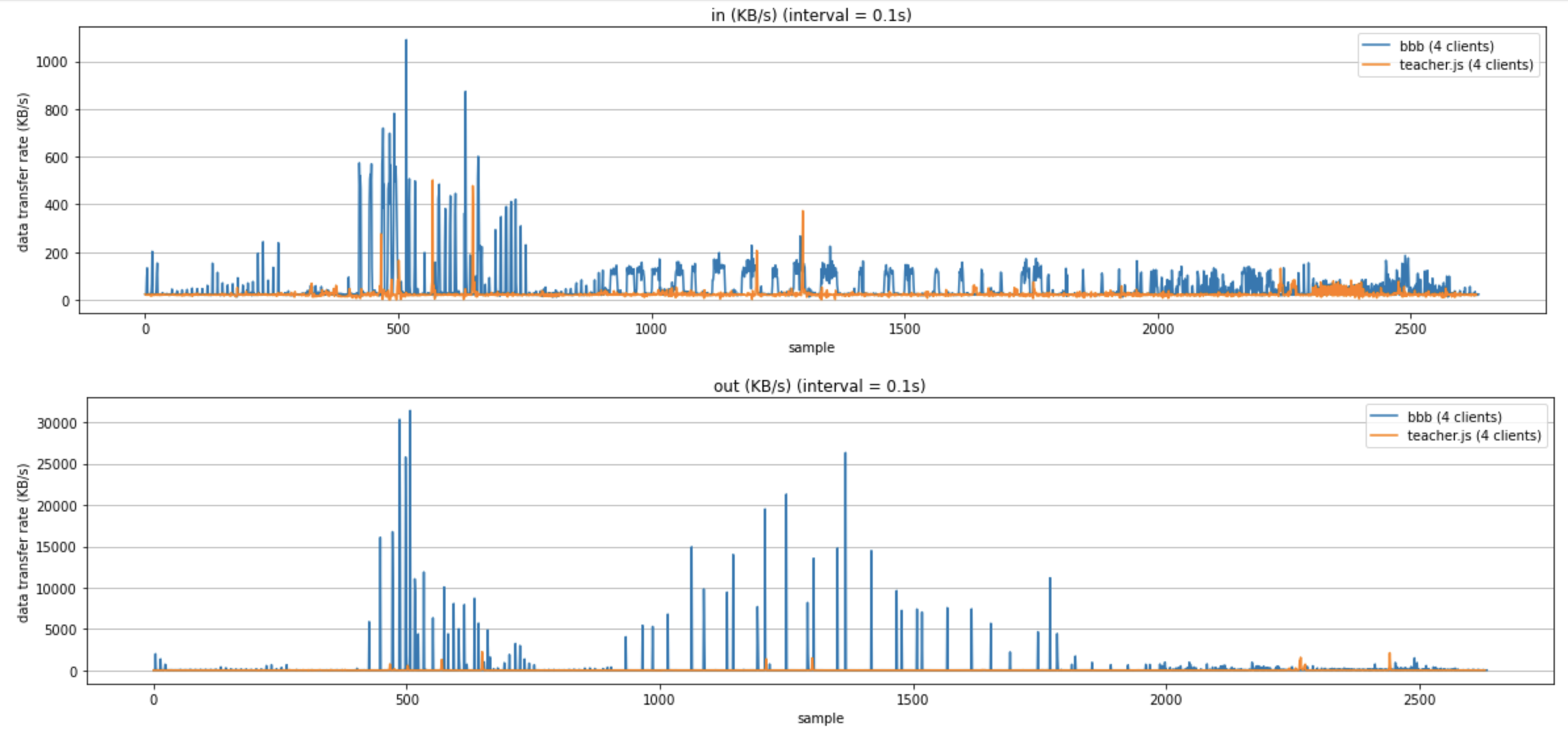

Overview
Demo
1. What is teacher.js ?
2. Why teacher.js ?
https://teacher.solar
1 teacher :: 1 (class)room :: 1 server(node)
Outdoor Online Teaching
teaching != screen sharing
screencasting paradigm
COSTLY: Encoding, streaming and decoding of Megabytes of video signal to N participants incurs significant network and processing costs and is not feasible in low-bandwith areas or in use cases were radical reduction of energy consumption is an issue.
ASEMANTIC: The rich internal structure of many screen-casted contents (presentation slides, web documents etc.) is lost during its encoding into video signal. This prohibits viewers to execute any other interaction with the content, apart from passive consumption (e.g. students cannot click on links displayed on a screen-casted website, cannot search for a term in a displayed text document, increase the font size, etc.).
(Hromada & Brodbeck, ECEI 2022 paper)
#codecasting
3. teacher.js architecture
audio mixer (Janus audiobridge/WebRTC)
teacher.js 1.0 (available modules)
Shared notes (Etherpad-lite)
Chat (matrix/hydrogen)
Wikipedia module
Presentation module
4. a BigBlueButton/ teacher.js comparison

BBB / teacher.js summary

next steps
shared video-viewing (code-casting)
whiteboard (spacedeck)
collaborative reading
client-side facial keypoint detection and artificial avatar/face synthesis
Summer Semester 2022 Online Gardening course
secure funding & create community
summa summarum
it is possible to have an online teaching toolkit running on a Raspberry Pi hardware
replacing video-streaming with code-casting paradigm leads to significant bandwidth reduction...
...and has many additional advantages (e.g. students can actually work with the source document)
the aim of teacher.js project is not to develop yet-another-videoconferencing-tool, but to provide a motivated teacher a minimalist yet modular & extensible toolkit containing everything he or she should need to do a great online course or hybrid online-offline course
links & references
https://github.com/freder/teacher.js
Hromada (2021) Three principles, 2 sub-principles and one magic wand for harm minimization and prevention of technological addiction in human children. Educational Innovations and Emerging Technologies). EIET 2021/12 Vol.1, Iss.1 : 48-57 https://doi.org/10.35745/eiet2021v01.01.0005
Brodbeck & Hromada (2022) teacher.js: A low-bandwidth online teaching tool. Proceedings of 5th IEEE Eurasian Conference on Educational Innovation 2022